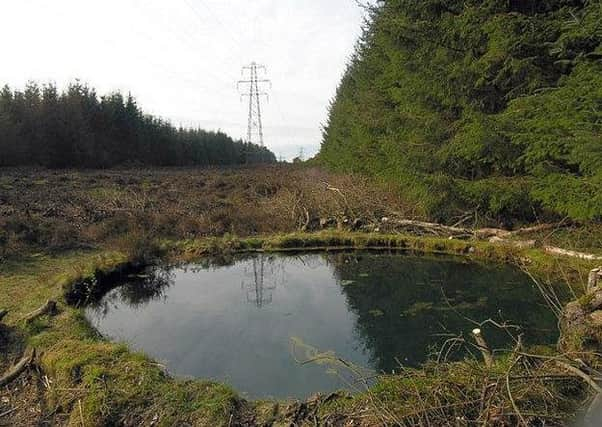The mystery of Torwood Blue Pool


In a wood clearing at Tor Wood just north of Denny and Larbert there exists a peculiar man-made water feature with supposedly unknown origins.
Known to locals as the Blue Pool, the ground level feature is brick-lined and extends to a depth of 4 metres.
Advertisement
Hide AdAdvertisement
Hide AdThe circular pool is filled to the brim with water, which once gave off the most tremendous blue colour - hence its nickname - but decades of algae growth have made the water dark and murky.
There are no visible signs of industry or anything else man-made around the pool save from electricity pylons - nothing to suggest why it was built.
Or so everyone thought.
One man who did more than any other to try and ascertain the Blue Pool’s original purpose was the late Nigel Turnbull.
Brought up in nearby Dunipace, Nigel first happened upon Torwood Blue Pool in 1961 aged just 10 years old.
As explained by Nigel on the website devoted to his work, the mystery has spanned generations: “My uncle, also a local, remembers it from his youth (late 1930s) and described it as looking just the same (as it does today)”.
When Nigel rediscovered the pool several decades later in 2007, he set about uncovering its secrets once and for all.
Determined to succeed, Nigel spent the next few years poring over old maps, interviewing elderly locals and taking samples from the water in a bid to solve the mystery.
Advertisement
Hide AdAdvertisement
Hide AdThe most popular theory is that it was originally used as a ventilation shaft for one of the local collieries. Nigel’s discovery of a “dog-leg” entrance passageway and arch at the foot of the pool, and his comparisons with traditional mining airshafts elsewhere, appeared to confirm this. But there was nothing concrete.
Then, in October 2011, Nigel received an email from a mining consultant named Miles Moulding, who claimed with confidence that Torwood Blue Pool must be a disused colliery airshaft.
Mr Moulding explained that similar vent shafts were present where he was based in Wales and that the dog-leg feature which had intrigued Nigel was designed to prevent debris falling into the main shaft without restricting air flow.
Going into more detail, he pointed out that, in order to protect it, the airshaft would have originally been topped with a circular wall around 7 feet high. The fact that the shaft is at ground level suggested that the bricks had been stolen or vandalised at some point.
As for the airshaft’s location, Miles added that distance was not an issue for a Victorian colliery, and that, in some cases, vents could be found 30 miles away from the main shaft.
Nigel Turnbull sadly succumbed to cancer in May 2012, just a few months after receiving Miles’ email.
Those close to Nigel will have been comforted that he was able to figure out the true purpose of Torwood Blue Pool before he died.
